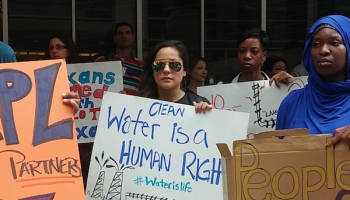Electronics are a significant source of toxic chemicals. There are two well-known third party multi-attribute certification programs for electronics that provide information on some sustainability attributes.
For more information, check out the EPEAT Registry and TCO Certified. TCO certified products can be found in their Product Finder. For EPEAT, search the online registry of products covered under the EPEAT ecolabel.
Proposed procurement goals and metrics:
- 100% of computers, laptops, tablets, displays, servers, monitors, imaging equipment, mobile phones, photovoltaic modules and inverters (PVMI), televisions, and multifunctional devices meet EPEAT silver or gold or TCO Certified
- Possible metric: Percent spend on Silver EPEAT or better or TCO certified products for all computers laptops, tablets, monitors, copiers, phones, and multifunctional devices
- 100% of relevant products are ENERGY STAR rated
Stretch goals:
- Computers, laptops, tablets, displays, servers, monitors, imaging equipment, mobile phones, photovoltaic modules and inverters (PVMI), televisions, and multifunctional devices meet requirements in EU ROHS 2 or equivalent or have a CE mark
- Product is free of substances of high concern. The product offered shall not contain substances listed on the current candidate list (Article 59 of Regulation (EC) No 1907/2006 on the Registration, Evaluation, Authorization and Restriction of Chemicals (REACH) in concentrations above 0.1% by weight (1000 mg / kg) per substance)
- Product restricts the use of prolonged skin contact chemicals of concern (see the following lists: EU CLP regulation, Annex VI to EC 1272/2008, EU REACH Annex XVII, entry 27, ISO 10993 Biological Evaluation of Medical Devices)
- Manufacturer adheres to Annex VI to CLP: List of Harmonised Classification and Labelling for Certain Hazardous Substances
- Manufacturer adheres to IEC 62474 - Material Declaration for Products of and for the Electrotechnical Industry
- Manufacturer has identified priority chemicals of concern and used available tools to identify alternatives that do not lead to regrettable substitutions (for example ,GreenScreen, Scivera, ChemForward, Clean Electronics Network Alternatives Assessment Guide, Interstate Chemicals Clearinghouse (IC2) Alternatives Assessment Guide, or equivalent)
- Manufacturer publicly discloses hazard assessments
- Manufacturer replaces high hazard cleaners and degreasers with safer alternatives (Tools include: CPA GreenScreen Certified Standard for Cleaners & Degreasers in Manufacturing, CEPN Priority Chemical List, Electronics Watch Guidance for Public Buyers, or equivalent)
- Manufacturer has developed a full material inventory of substances in products
- Manufacturer records and publicly discloses use of regulated chemicals (IEC 62474 declarable substances list)
- Batteries meet EU Battery Directive 2018/849/EC requirements or equivalent
Case studies and resources:
- Global Electronics Council State of Sustainability Research: Chemicals of Concern
- The Intergovernmental Cooperative Purchasing Agreement (ICPA) for Office Supplies included requirements that all Electronic and IT products must be on the Electronic Products Environmental Assessment Tool (EPEAT) Registry at the Silver or Gold level, as required by law (State Finance and Procurement Article §14–414). RPN
- Phoenix, AZ: Environmentally Preferable Purchasing (EPP) Policy directs City employees to buy “products… registered as bronze or better under the Electronic Products Environmental Assessment Tool (EPEAT) meet rigorous environmental standards. RPN
- San Francisco, CA: Approved Environmentally Preferable Purchasing Requirements for Personal Computers and Servers directs City departments to purchase personal computers, notebook computers, and monitors that meet the EPEAT Gold standard. RPN


